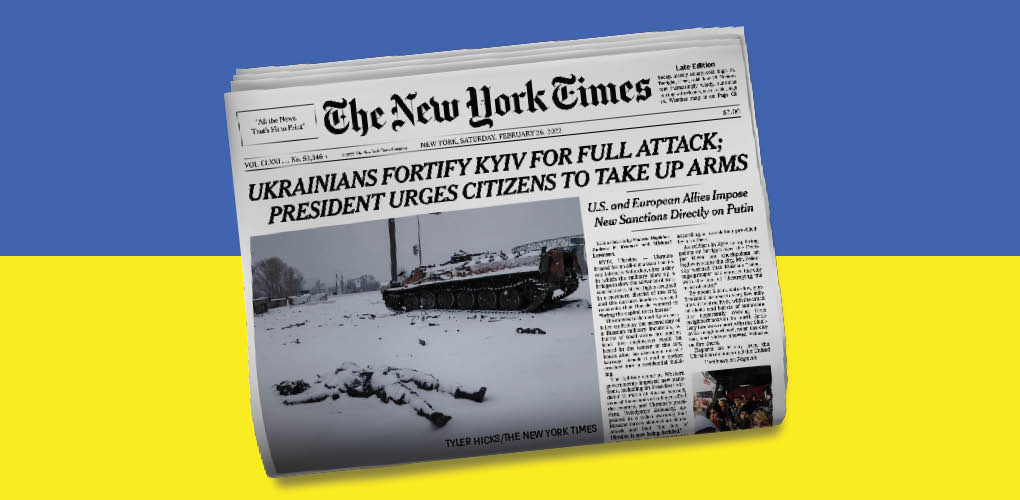Three communications takeaways from the Russia-Ukraine war
A picture is still worth a thousand words, or maybe even more
A dead Russian soldier is lying on the ground, the fallen snow has already covered parts of his still body and cloaked his face. From an editorial point of view, this photograph was ideal: It easily passes the “morning coffee test” meaning; the readers won’t skip a beat while sipping their cappuccino and eating their croissant. The death in the photo is subdued, artsy, almost like an impressionist winter painting by Pissaro. It’s not a lacerated body, there’s no blood. It is a death that can be spread across the front page of one of the most important and influential newspapers in the world, the New York Times (click to see, bottom right).
The power of this photograph, published on the 26th of February, lies not only in its blood-curdling outcry, but also in that it hits hard for the West’s collective memory. Although we’re not exactly ameture war historians or especially avid for WW2 trivia, we know a thing or two about Operation Barbarossa and the Soviet Winter Counteroffensive that followed six months later. The German imperiousness when speeding eastward — overlooking the importance of good logistics and forgetting that the Soviets were better prepared for the bitter cold than they were — memories of that time are not invoked.
The renowned warzone photographer, Tyler Hicks, is well aware of these collective memories. That is how, in one single frame, he succeeded in conveying multiple messages: Here we are 80 years later, and the tables have turned. The Russians are in the role of the Nazis; The Russians have taken on the role of the foreign occupiers, that will only be diggin their own graves the further they advance; The Russians started this hubris war, and behind every such hubris is the anonymous soldier, left to die alone in the snow.
While the soldier is dead, the printed press is very much alive. This powerful photograph, alongside hundreds more of iconic photos amounting as the war rages on (the Ukrainians hiding underneath a destroyed bridge, the empty baby carriages waiting for Ukrainian mothers on the border with Poland and more), remind us that conventional journalism is still alive and kicking. It’s true that in today’s era, every bypasser with a smartphone can be as influential as the biggest news agencies. And yet, the professional, senior journalists that have “boots on the ground” will be the ones to provide the powerful stories that shatter all previous conceptions in a way that no manufactured tik-tok sensation will ever be able to do.
PR as Artillery
The balance of power was clear from the start: Ukraine vs. the Russian military-monster is not fair play, not with regards to manpower or equipment. By now, and even a fortnight into the war — Ukraine should have already been swallowed whole. The fact that they are still standing has a lot to do with their unconventional weaponry: a series of wise PR moves.
First of all, Putin vs. Zelensky — The former is poker-faced, discommunicative, and his fans seem to flock to his negative traits: he’s belligerent, cold-hearted, brutal and somewhat of a sociopath. The latter is a former comedian and TV star that found himself governing a country and eventually fighting on the battlefield. Here too, there is no symmetry of power. But Zelenski made good use of all of his cards: his military swag, his approachability with the press and his numerous appearances in besieged Kiev. Contrary to Putin’s stifling stiffness, Zelenski responded with overflowing cuteness even in the most difficult of times. You may ask yourself, what is he gaining? Ukraine still experienced heavy bombardments and lost big territories.
The answer is that in the first days of the Russian invasion, when Russian troops still weren’t advancing deep into Ukraine, the openness and accessibility of the Ukrainians made a big impact on global public opinion. The NATO countries that preferred to be let off the hook by “sending thoughts and prayers” (and hoped that our indifferent world would soon move on to the next disaster), quickly understood that they cannot stand idly by without interfering. Ukraine's effective PR curbed the pace of the Russian tanks and shells.
Behind every sentence in Hebrew is a Jew in a Shtetl
What does hearing a name like “kharkov” stir inside of you? And not just Kharkov, but Lviv, Zhytomyr, Odessa and Kherson? These are seemingly foreign names of far away Ukrainian towns. But we don’t like Eastern Europe. The Jewish-Israeli collective memory is now being reminded of the hardship of exile when hearing these names. The bitter cold, the marches in the snow, forests, towns and entire communities that perished in pogroms and war. Antisemitism, Nazism, Partisans. Nazi collaborators, Demjanjuk, and the Holocaust. And it doesn’t matter if you're Askenazi or Mizrahi or go by none of those identities, these are matters that were meant to be repressed. It is precisely these scenes and locations that stand in contrast to the blue skies of Zionism, sun-tanned boys and girls and orange groves.
But behind every sentence in Hebrew is a diaspora Jew from the Shtetl, and reality forces us to contend with Zhytomyr, Kharkov, Lviv and Odessa. Whether we like it or not, they’re coming right at us. These memories are invoked when commentators draw out the invasion route of the Russian troops against the helpless Ukrainians, or so we’re told by people that, until a minute ago, were experts on epidemiology.
So what does this Putin guy want? What is the reason for this ruthless and cruel act? Who in the world is supposed to benefit from a conflict that may result in a disastrous world war, that we in Israel may also be affected by?
These questions are so inexplicable and bewildering to us, and the press alike, that the only way to handle them is to flood the public with information. Maps, charts, positioning of forces, infographics with too many red arrows to follow, and many names of freezing and far away towns that we extract from our collective Holocaust memories, reciting them, trembling. Notice how the words “an orphanage for Jewish orphans” made us all jump, when refugees started arriving in Israel. It triggered our deepest ancestral traumas.
Although the future remains unknown, we already know that the past was bad. But maybe the past is our comfort zone?

